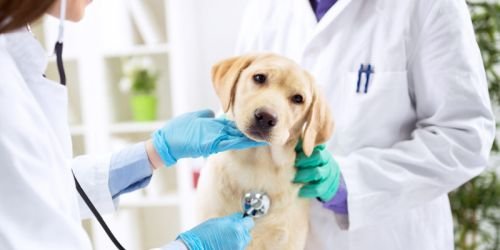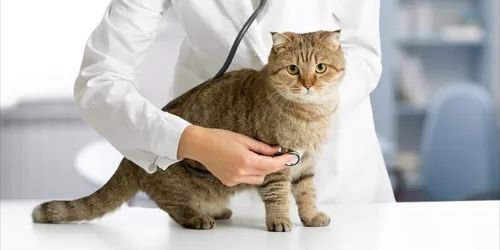Good Veterinary Practices (GVP) Certification: A Guide for Veterinary Practices

GVP Good Veterinary Practices Certification
What is GVP Certification?
Good Veterinary Practices (GVP) certification signifies adherence to a robust management system aimed at enhancing veterinary care standards in clinical settings. GVP is integral in the veterinary industry as it establishes a framework that ensures consistency, accountability, and continuous improvement in the care provided to animals. This certification serves as a benchmark for veterinary practices, fostering an environment where high-quality veterinary care is consistently delivered.
The GVP Management System encapsulates various operational, clinical, and administrative practices that veterinary clinics must adhere to. This system is designed to promote ethical practices, enhance client satisfaction, and ensure the well-being of animals. By implementing GVP standards, veterinary practices can effectively manage risks, streamline processes, and ultimately elevate the quality of veterinary services offered to their clients.
Historically, the emergence of GVP certification responded to the increasing complexity of veterinary medicine and the growing expectations from pet owners regarding the quality of care. This development marked a significant evolution in veterinary standards, where continuous improvement and evidence-based practices became paramount. Over the years, as veterinary practices have expanded and diversified, the need for a standardized approach to quality management has become increasingly evident.
In today’s competitive landscape, GVP certification is essential for veterinary businesses seeking to differentiate themselves in the market. It not only enhances the credibility of practices but also builds trust among clients, reassured that their pets receive care from a certified and professional establishment. As the veterinary industry continues to evolve, GVP certification remains a crucial component in ensuring that practices adhere to the highest standards of care, ultimately benefitting both animal patients and their owners.
Good Veterinary Management (GVP) System Features
Good Veterinary Management systems play a crucial role in modern pet clinics, specifically by enhancing operational efficiency and ensuring compliance with Good Veterinary Practice (GVP) standards. One of the primary features is appointment scheduling, which allows clinics to manage their calendars effectively. This functionality ensures that staff can efficiently allocate time slots for consultations, minimizing wait times and maximizing resource utilization. Online booking options further streamline this process, enhancing convenience for clients.
Another vital component is electronic medical records (EMR). Veterinary management systems facilitate the digital storage of patient records, including medical histories, vaccinations, and treatment plans. This centralized access not only enhances the accuracy of record-keeping but also allows for immediate retrieval by veterinary professionals. Additionally, EMR systems often include features that alert staff to important updates or recalls, ensuring compliance with safety standards.
Inventory management is equally significant in veterinary practices. Effective inventory tracking systems enable clinics to oversee their medical supplies, pharmaceutical products, and equipment. By maintaining real-time inventory levels, practices can prevent shortages, optimize stock levels, and comply with regulatory requirements regarding medication handling. Consequently, this feature promotes better resource management and reduces wastage.
Client communication functionalities are also integral to a veterinary management system. Automated reminders for appointments, vaccinations, and follow-up care help ensure that clients remain engaged in their pet’s healthcare journey. These systems also facilitate seamless communication through email and text alerts, fostering a stronger client-clinic relationship and improving overall satisfaction.
Finally, robust reporting functionalities provide veterinary practices with the tools to analyze operations and outcomes effectively. From tracking patient visits to evaluating financial performance, reports generated through these systems enable informed decision-making. Overall, the integration of these key features not only adheres to GVP standards but also enhances the client experience and operational practices within veterinary clinics.

GVP Good Veterinary Practices Equipments
Understanding Veterinary Hygiene Requirements
Veterinary hygiene requirements play a critical role in achieving Good Veterinary Practice (GVP) certification for pet clinics. These standards ensure that veterinary facilities meet specific hygiene practices and policies necessary for maintaining the health and safety of both animals and staff. Adhering to stringent hygiene measures is essential not only for compliance but also for fostering a trustworthy environment for pet owners.
A pet clinic seeking GVP certification must implement robust sanitation protocols. This includes regular cleaning and disinfection of all surfaces, equipment, and areas where animals are housed or treated. Proper waste disposal practices must also be established, ensuring that all biological and medical waste is handled and disposed of according to regulatory guidelines. Such practices minimize the risk of infection, significantly contributing to a safe and hygienic environment.
Infection control measures are another key aspect of veterinary hygiene requirements. The use of personal protective equipment (PPE), such as gloves and masks, is mandated to reduce the transmission of pathogens between animals and staff. Additionally, clinics must have a clear protocol for sterilizing instruments and equipment to prevent any cross-contamination during procedures.
The importance of maintaining high standards of cleanliness extends beyond compliance; it also significantly impacts a clinic’s reputation. Pet owners are more likely to trust a facility that demonstrates a commitment to hygiene and safety. Implementing these practices can enhance client satisfaction and loyalty, which are crucial for the long-term success of veterinary practices.
Furthermore, adhering to hygiene requirements ensures that veterinary clinics remain compliant with governmental regulations and guidelines. Non-compliance can lead to legal repercussions, including fines or loss of accreditation. Therefore, integrating comprehensive hygiene practices not only supports animal health but also bolsters the clinic’s legal standing and operational viability.

GVP Good Veterinary Practices Requirements
Who Needs GVP Certification?
Good Veterinary Practice (GVP) certification is essential for various professionals within the veterinary field, as it enhances the quality of care provided in veterinary practices. Primarily, pet clinic owners stand to benefit significantly from obtaining GVP certification. By implementing the principles of GVP within their practices, clinic owners can establish a benchmark of excellence that attracts clients seeking high-quality veterinary services. This certification not only enhances the clinic’s reputation but also fosters client trust, which is crucial for client retention and practice growth.
Veterinarians are another critical audience who should consider pursuing GVP certification. The certification provides them with updated knowledge and best practices in veterinary medicine, contributing to improved patient outcomes. By adopting GVP standards, veterinarians demonstrate their commitment to continuous professional development and ethical practice, which can enhance their credibility and open doors to advanced career opportunities. Furthermore, GVP-certified veterinarians can inspire confidence among pet owners, thereby encouraging them to seek their services.
Veterinary technicians and support staff also play an integral role in the success of a practice and stand to gain from GVP certification. Their involvement in implementing GVP standards can improve operational efficiency and the overall care experience for animals. As such, gaining GVP certification can lead to professional growth and increased responsibilities within their roles. In addition, support staff trained under GVP guidelines can better communicate with pet owners, thus enhancing client satisfaction and service quality.
In summary, GVP certification is beneficial for a wide range of professionals in veterinary practices, including clinic owners, veterinarians, and support staff. Each group can leverage this certification to improve their skills, client trust, and overall practice success, thereby contributing to a higher standard of veterinary care.
How Can We Assist You?
Would you like to learn more about our services? Feel free to contact us today!
If you’re interested in professional certification, we’d be happy to provide you with an excellent price offer.
Good Veterinary Practices (GVP) Certification: A Guide for Veterinary Practices

GVP Good Veterinary Practices Certification
What is GVP Certification?
Good Veterinary Practices (GVP) certification signifies adherence to a robust management system aimed at enhancing veterinary care standards in clinical settings. GVP is integral in the veterinary industry as it establishes a framework that ensures consistency, accountability, and continuous improvement in the care provided to animals. This certification serves as a benchmark for veterinary practices, fostering an environment where high-quality veterinary care is consistently delivered.
The GVP Management System encapsulates various operational, clinical, and administrative practices that veterinary clinics must adhere to. This system is designed to promote ethical practices, enhance client satisfaction, and ensure the well-being of animals. By implementing GVP standards, veterinary practices can effectively manage risks, streamline processes, and ultimately elevate the quality of veterinary services offered to their clients.
Historically, the emergence of GVP certification responded to the increasing complexity of veterinary medicine and the growing expectations from pet owners regarding the quality of care. This development marked a significant evolution in veterinary standards, where continuous improvement and evidence-based practices became paramount. Over the years, as veterinary practices have expanded and diversified, the need for a standardized approach to quality management has become increasingly evident.
In today’s competitive landscape, GVP certification is essential for veterinary businesses seeking to differentiate themselves in the market. It not only enhances the credibility of practices but also builds trust among clients, reassured that their pets receive care from a certified and professional establishment. As the veterinary industry continues to evolve, GVP certification remains a crucial component in ensuring that practices adhere to the highest standards of care, ultimately benefitting both animal patients and their owners.
Good Veterinary Management (GVP) System Features
Good Veterinary Management systems play a crucial role in modern pet clinics, specifically by enhancing operational efficiency and ensuring compliance with Good Veterinary Practice (GVP) standards. One of the primary features is appointment scheduling, which allows clinics to manage their calendars effectively. This functionality ensures that staff can efficiently allocate time slots for consultations, minimizing wait times and maximizing resource utilization. Online booking options further streamline this process, enhancing convenience for clients.
Another vital component is electronic medical records (EMR). Veterinary management systems facilitate the digital storage of patient records, including medical histories, vaccinations, and treatment plans. This centralized access not only enhances the accuracy of record-keeping but also allows for immediate retrieval by veterinary professionals. Additionally, EMR systems often include features that alert staff to important updates or recalls, ensuring compliance with safety standards.
Inventory management is equally significant in veterinary practices. Effective inventory tracking systems enable clinics to oversee their medical supplies, pharmaceutical products, and equipment. By maintaining real-time inventory levels, practices can prevent shortages, optimize stock levels, and comply with regulatory requirements regarding medication handling. Consequently, this feature promotes better resource management and reduces wastage.
Client communication functionalities are also integral to a veterinary management system. Automated reminders for appointments, vaccinations, and follow-up care help ensure that clients remain engaged in their pet’s healthcare journey. These systems also facilitate seamless communication through email and text alerts, fostering a stronger client-clinic relationship and improving overall satisfaction.
Finally, robust reporting functionalities provide veterinary practices with the tools to analyze operations and outcomes effectively. From tracking patient visits to evaluating financial performance, reports generated through these systems enable informed decision-making. Overall, the integration of these key features not only adheres to GVP standards but also enhances the client experience and operational practices within veterinary clinics.

GVP Good Veterinary Practices Equipments
Understanding Veterinary Hygiene Requirements
Veterinary hygiene requirements play a critical role in achieving Good Veterinary Practice (GVP) certification for pet clinics. These standards ensure that veterinary facilities meet specific hygiene practices and policies necessary for maintaining the health and safety of both animals and staff. Adhering to stringent hygiene measures is essential not only for compliance but also for fostering a trustworthy environment for pet owners.
A pet clinic seeking GVP certification must implement robust sanitation protocols. This includes regular cleaning and disinfection of all surfaces, equipment, and areas where animals are housed or treated. Proper waste disposal practices must also be established, ensuring that all biological and medical waste is handled and disposed of according to regulatory guidelines. Such practices minimize the risk of infection, significantly contributing to a safe and hygienic environment.
Infection control measures are another key aspect of veterinary hygiene requirements. The use of personal protective equipment (PPE), such as gloves and masks, is mandated to reduce the transmission of pathogens between animals and staff. Additionally, clinics must have a clear protocol for sterilizing instruments and equipment to prevent any cross-contamination during procedures.
The importance of maintaining high standards of cleanliness extends beyond compliance; it also significantly impacts a clinic’s reputation. Pet owners are more likely to trust a facility that demonstrates a commitment to hygiene and safety. Implementing these practices can enhance client satisfaction and loyalty, which are crucial for the long-term success of veterinary practices.
Furthermore, adhering to hygiene requirements ensures that veterinary clinics remain compliant with governmental regulations and guidelines. Non-compliance can lead to legal repercussions, including fines or loss of accreditation. Therefore, integrating comprehensive hygiene practices not only supports animal health but also bolsters the clinic’s legal standing and operational viability.

GVP Good Veterinary Practices Requirements
Who Needs GVP Certification?
Good Veterinary Practice (GVP) certification is essential for various professionals within the veterinary field, as it enhances the quality of care provided in veterinary practices. Primarily, pet clinic owners stand to benefit significantly from obtaining GVP certification. By implementing the principles of GVP within their practices, clinic owners can establish a benchmark of excellence that attracts clients seeking high-quality veterinary services. This certification not only enhances the clinic’s reputation but also fosters client trust, which is crucial for client retention and practice growth.
Veterinarians are another critical audience who should consider pursuing GVP certification. The certification provides them with updated knowledge and best practices in veterinary medicine, contributing to improved patient outcomes. By adopting GVP standards, veterinarians demonstrate their commitment to continuous professional development and ethical practice, which can enhance their credibility and open doors to advanced career opportunities. Furthermore, GVP-certified veterinarians can inspire confidence among pet owners, thereby encouraging them to seek their services.
Veterinary technicians and support staff also play an integral role in the success of a practice and stand to gain from GVP certification. Their involvement in implementing GVP standards can improve operational efficiency and the overall care experience for animals. As such, gaining GVP certification can lead to professional growth and increased responsibilities within their roles. In addition, support staff trained under GVP guidelines can better communicate with pet owners, thus enhancing client satisfaction and service quality.
In summary, GVP certification is beneficial for a wide range of professionals in veterinary practices, including clinic owners, veterinarians, and support staff. Each group can leverage this certification to improve their skills, client trust, and overall practice success, thereby contributing to a higher standard of veterinary care.
How Can We Assist You?
Would you like to learn more about our services? Feel free to contact us today!
If you’re interested in professional certification, we’d be happy to provide you with an excellent price offer.

